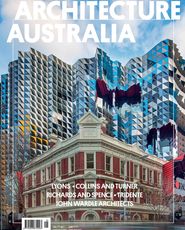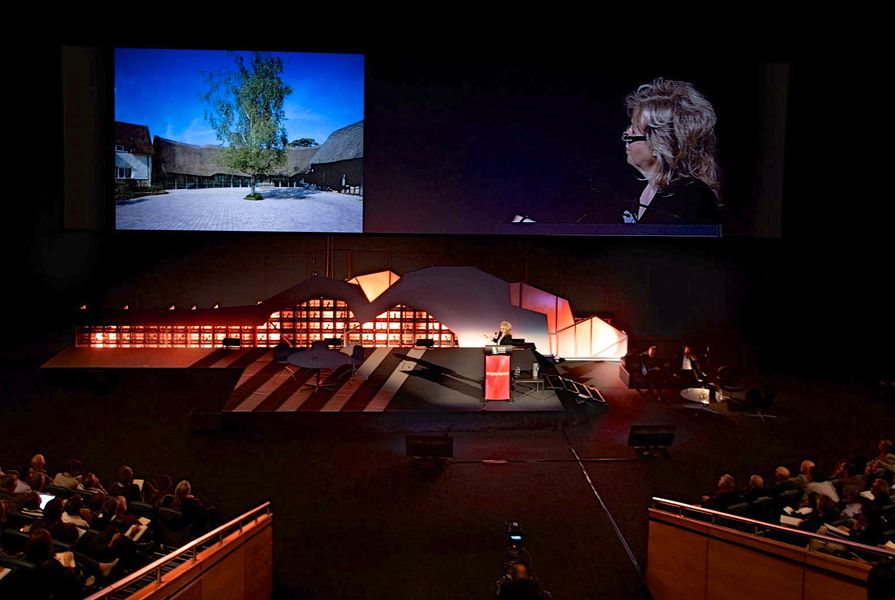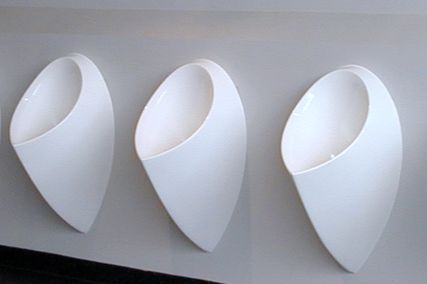In April 2011, immediately following Juhani Pallasmaa’s concluding keynote at the 2011 National Architecture Conference, Michael Rayner, Shane Thompson and Peter Skinner were dealt the unenviable task of launching the 2012 conference: Experience. Getting any cut-through in the wake of Pallasmaa, one of the great architectural thinkers on phenomenology, was a challenge for the three creative directors, who presented a sunny Queensland version on the experience of place.
This year’s national conference was the first time the event had sold out – it attracted over 1,500 delegates, making it the largest gathering of Australian architects ever. This no doubt was due, in part, to the conference being held outside of Melbourne and Sydney, and mostly to Queensland’s enthusiastic architecture community. Some 876 delegates attended.
The conference provided a diverse line-up of speakers that offered something for everybody – the group included rising star Kevin Carmody, roving international architect Kjetil Thorsen of Snøhetta and local favourite Rachel Neeson of Neeson Murcutt Architects. The diversity underscored the open and pluralistic approach of the creative directors to the theme of “experience,” and while anyone hoping for a more targetted discourse might have been disappointed, this approach allowed each presenter to speak to their strengths and ultimately prompted critical discussion across a broad spectrum of practice.
The conference opened refreshingly with a non-architect, Paul Finch, director of the World Architecture Festival, who reminded us that architecture is the setting for everything that happens in our lives. Kathryn Findlay of Ushida Findlay Architects tapped into the conference theme by describing how in her work, the experiential overrides any compulsion to stand out with form. In Pool House II, for example, Findlay marries seemingly discordant aesthetics – a traditional thatched roof with a contemporary, voluptuous, organic interior. In her conclusion, she surprisingly revealed a desire to design rectilinear buildings. It seems that circumstance has hemmed her into particular aesthetic directions.
Over 1,500 people attended the 2012 conference at the Brisbane Convention & Exhibition Centre, with over half the delegates being from Queensland.
Image: Peter Bennetts
Wang Shu with Glenn Murcutt provided a fitting finale to day one, with a significant keynote that continues to ignite debate within our studio. It was a great spectacle: a pair of Pritzker Prize winners revelling in the art of making while denouncing the trend for imported architecture and more broadly, the impact of the rapid urbanization occurring in China. Wang Shu protested against the quality of architecture in China’s expanding cities, describing it as “shit,” and positioned his work as a form of alternate practice. With a wry smile, he stated, “If that’s what professional architects do, then I am going to call myself an amateur architect.” His work under the aptly named Amateur Architecture Studio is one based on spontaneity, craftsmanship and cultural traditions. He chooses to concentrate on hand-crafted construction, often using materials discarded from the demolition of traditional Chinese buildings. Wang Shu substantiates his approach confidently as he unpacks a collection of powerful works, including the much-celebrated Ningbo History Museum.
But in recounting Shu’s presentation, a discord with his claim emerges. How does his work engage with the core driver of the rapid urbanization that he critiques, that is, the billion people migrating to the city seeking a better life perhaps not for oneself but for the next generation?
The physical potency of his work is undeniable, but it is how he frames his own work and, accordingly, how the profession celebrates his work, that does not acknowledge the millions of people moving to Chinese cities to improve their standard of living, in fact, to escape poverty. It’s disappointing that Shu doesn’t pursue architecture in a manner that can also provide a relevant framework for a better modern China – one brought about by a more effective, measured urbanization with a link to China’s cultural history. His work operates strictly as a critique of Chinese urbanization.
The following morning, Anuradha Mathur and Dilip da Cunha continued the theme of experience by defining it as the way we encounter, perceive and understand the world. In turn, they located design as an act of reshaping our relationship to the world.
Mathur and da Cunha’s work to re-conceive the landscape of flood-prone places such as the Mississippi, New Orleans or Mumbai sits as part of a larger movement to redefine urbanism through a systems-based approach to design. Their attitude to water, where the monsoon is seen as a gift rather than a threat, and something to be accommodated rather than controlled, establishes a completely different mindset for design in water-sensitive regions. They stated, “We are interested in how the flux, the infinite nature of landscapes, can allow for new appropriations, new identities, and new projects, projects that work with negotiated boundaries rather than enforced limits, and that emphasize adaptation not control.” They were the surprise standout speakers, articulating a philosophical approach that reveals a broader potential for the profession and its capacity to transform our cities via harnessing environmental phenomena.
The creative directors returned to the stage to close the conference, which was accentuated by an outpouring of emotion between the “three amigos.” This put a final personal touch on the whole experience and highlighted the genuine hospitality that Queenslanders extended throughout the conference. In this spirit, we carried on to drink beers and dine in a style reminiscent of the days prior to the global financial crisis, before moving on to an arcade party held by Brisbane studio Richards and Spence, entitled the Official Unofficial Off-Schedule Wrap Party. The party was a generous gesture for a small practice, apparently just one of a few that it holds each year.
Captivated by Brisbane, we returned to Sydney questioning our own circumstances. Back in our studio, we find ourselves again debating what role architecture has to play in the future of our practice, and indeed civilization. Is our profession perceived to operate with exclusivity, offering our abilities to those seeking aesthetic and symbolic outcomes? How do we broaden our participation in the development of civilization as it struggles to deal with population growth and sustainability? What the conference has made clear for us is that there is a gap between what the world can gain from architectural thinking and the dominant conception and experience of architecture as a profession that adds cultural value when, and where, given the opportunity.
Read other articles on the National Architecture Conference.
Source

Discussion
Published online: 21 Dec 2012
Words:
John Choi,
Tai Ropiha
Images:
Ethan Rohloff,
Peter Bennetts
Issue
Architecture Australia, September 2012


















